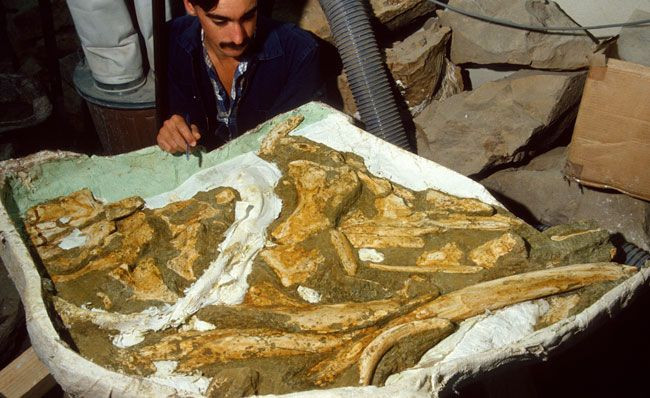Previously Unknown Baleen Whale Identified From 27-Million-Year-Old Fossils

A group of paleontologists has described a new genus of baleen whale, one that lived some 27 million years ago but was not detailed in the books of biology until now.
Nearly 30 years ago, remains of the long-dead animal were unearthed from a fossil-bearing rock unit located in the southern Canterbury and Waitaki district of New Zealand. The site of discovery, dubbed Kokoamu Greensand, dates back to 34-23 million years ago, something that helped scientists determine how old the fossils were.
However, the genus wasn’t identified or described until Cheng-Hsiu Tsai from University of Otago and the team came up with an appropriate analytical framework.
Based on the remains, which included a skull and other bones, they named the ancient whale as genus Toipahautea waitaki, which means a baleen-origin whale from the Waitaki region in English.
According to a release from the university, baleen whales have baleen plates in their upper jaw which they use as a filter to catch animals like krill underwater. The animals usually don’t have teeth, but are insanely large in size — 20 to 112-feet — and are only found in cold waters.
“This is a pretty old whale that goes almost half-way back to the age of the dinosaurs,” Ewan Fordyce, who supervised Tsai’s work, said in a statement. “It’s about as old a common ancestor as we have for the living baleen whales like the minke whales and the right whales.”
Though the skeleton of the newly-discovered whale was dis-articulated during the dig, the closely-associated bones, particularly the ear bones helped them identify the animal in question. The three feet long skull of the animal suggested it would have been a pretty small species back in the day, nearly half of what an adult minke whale looks like.
And, not just size. Even the feeding mechanism of the long-dead animal could have been similar to that of a minke, Fordyce said after noting Toipahautea waitaki had toothless, long and narrow jaws.
The team, which has been tracking down the history of whales in New Zealand, could not identify the exact cause of this whale’s death. But, they do have theories that suggest the sea-dweller died after being attacked by a shark or suffering from a disease. Once it died, the body sank to the bottom of the ocean, where the skeleton became a hub for coral and other organisms.
That said, it is also worth noting this might not be the only previously unknown baleen whale genus to be identified. The group believes other baleen whale species, even older than the one in this study, could have existed, waiting to be unearthed.
The study announcing the new archaic baleen whale was published April 18 in the scientific journal, Royal Society Open Science.
© Copyright IBTimes 2024. All rights reserved.





















